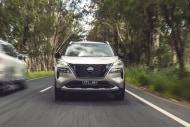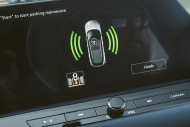
Cars with rear autonomous emergency braking (AEB)
Autonomous emergency braking, or AEB, has saved countless lives, not to mention bountiful bumpers, since its inception more than a decade ago. But the next step for automotive brands to consider is backover or rear AEB.
Autonomous emergency braking, or AEB, has saved countless lives, not to mention bountiful bumpers, since its inception more than a decade ago.
- Rear AEB can prevent collisions with obstacles and/or people
- Works in conjunction with reversing camera and parking sensors
- ANCAP to begin testing rear AEB systems from 2023 onwards
Forward or frontal AEB is now a common item fitted to almost all new vehicles on the market in Australia, with just a handful of vehicles remaining on sale that don’t have this potentially life-saving feature on offer.

But the next step for automotive brands to consider is backover or rear AEB, which is designed to stop you from inadvertently striking a person behind the car when you’re in reverse.
Sadly, this is all too common an occurrence in driveways and parking lots across the nation and around the world.
On average, seven children (aged 0-14) per year are killed as a result of being reversed into or over, according to the Australian Government’s Bureau of Infrastructure, Transport and Regional Economics. There are also more than 60 injuries per year (children aged 0-14) as a result of this type of accident, too.
However, with the advanced technologies deployed in modern-day vehicles, there are some that will soon, in theory - and hopefully in practice - reduce the risk of these sorts of incidents occurring. In fact, some vehicles already offer this type of rear AEB with pedestrian detection.
Under the Australasian New Car Assessment Program (ANCAP) guidelines for 2023 and beyond - in line with the Euro NCAP guidelines - there will be new protocols in place to attempt to prevent accidents from occurring. The AEB Backover test will assess a car’s ability to autonomously brake the car when it is reversing. It will do so using a child-pedestrian test dummy.
Examples include the Nissan Qashqai, X-Trail and Pathfinder, GWM Haval Jolion and H6, GWM Ora, GWM Tank 300, BMW X1, BYD Atto 3, Ford Ranger and Everest, Genesis GV60, Hyundai Ioniq 6 and Palisade, Kia Sportage (not on base model) and Niro (not on base model), LDV Mifa and Mifa 9,and plenty more besides.

It is great to see brands aiming up and ticking this important safety box for consumers. These systems typically work at low to very low speeds - often from about 1.5km/h to 15km/h. If you’ve seen our “Reverse Speed Tests”, don’t expect this form of technology to prevent you from impact if you’re backing up at pace.
However, you should be aware that some vehicles offer rear auto emergency braking that isn’t designed to stop for a pedestrian, only for obstacles. That is no doubt still a worthy item, and could save you issues when parking and save the paint on your back bumper.
There are plenty of other vehicles with rear AEB that operate for obstacles and vehicles - many of which work in conjunction with the blind-spot monitoring and rear cross-traffic alert systems, too.
A simple way to check whether a vehicle has the potentially life-saving Backover AEB system is to look at the ANCAP website and see if the car has that section covered. It could be a life-changing, or heaven forbid, life-saving bit of information.

More Urban Guide


